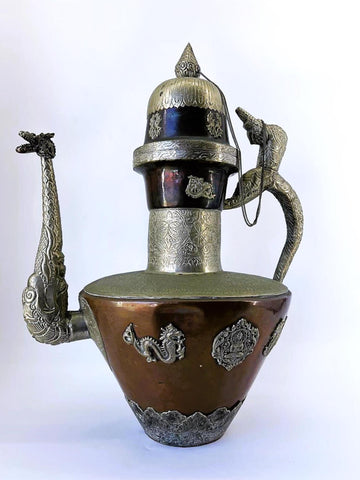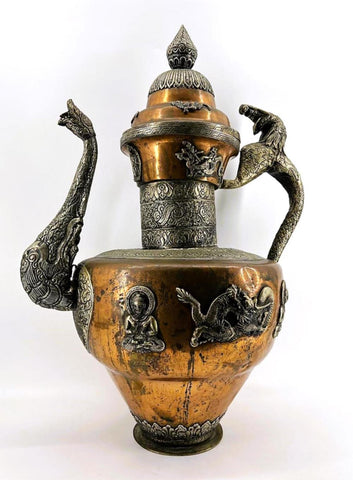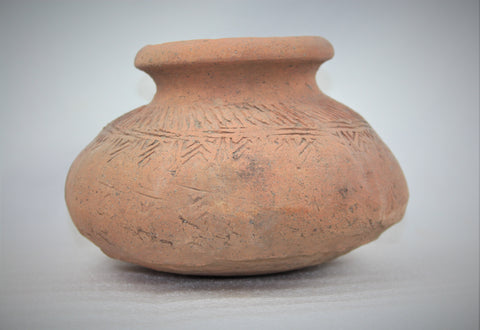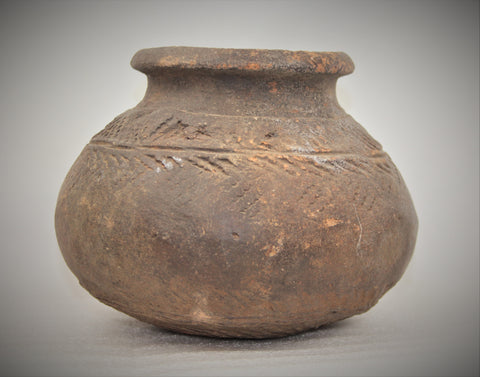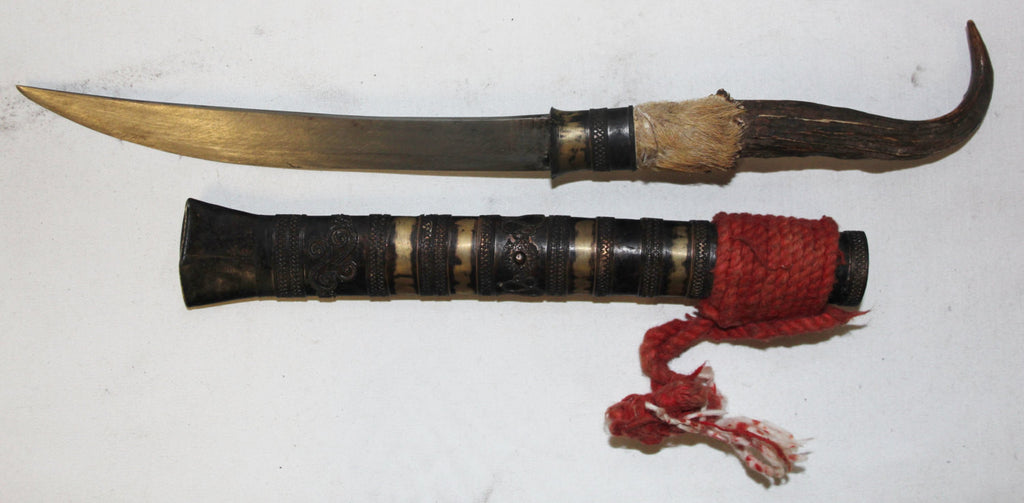
Ceremonial Knife : Vintage Chin Ceremonial Knife from Inle Lake, Myanmar #452
$ 450.00
Ceremonial Knife
452. Vintage ceremonial Chin knife from Inle Lake, Myanmar. Knife is toped with antler from small deer along with deer skin/fur. The case is ensized brass and copper wraped with red rope. Over all length is approximately 15 inches. Age is estimated to be in the early 1900‰ and overall condition is very good .
Chin is one of the ethnic groups in Myanmar. The Chins are found mainly in western part of Myanmar in the Chin State and about a population of 1.5 million. They also live in nearby Indian states of Nagaland, Mizoram and Manipur and Assam. Owing to Mizo influence and Baptist missionaries' intervention, 80%-90% of the population are Christians. However, a sizeable minority of the Chin adhere to their traditional tribal beliefs and Theravada Buddhism. Traditionally, the Chin were animists.
The Chin are one of the largest ethnic minority groups in Myanmar. The Chin people are Tibeto-Burman groups and they probably came to Myanmar, especially the Chindwin valley in the late 9-10 century A.D. Most Chin people moved westward and they probably settled in the present Chin State around A.D 1300-1400 A.D.
There are many tribes among the Chin people such as Lai, Tedim, Asho and Cho. Three major tribes of the Chin are Tedim, Falam and the Hakas. For want of a more acceptable common name they are usually called the Chin-Kuki-Mizo people, bringing together the three most common names for them whether given by outsiders or themselves. Bawn tribe in Southern Mizoram State and Bangladesh are descendants of the Lai tribe. This Chin, Mizo, Zomi, and Kuki people are scattered into three countries-Myanmar, Bangladesh, and India.
The realization that these are of one and share common dialectical root and customs even though separated by international and state boundaries brought about movements for Unification of the occupied territories and of the people. (Source:Myanmar People. Net)

